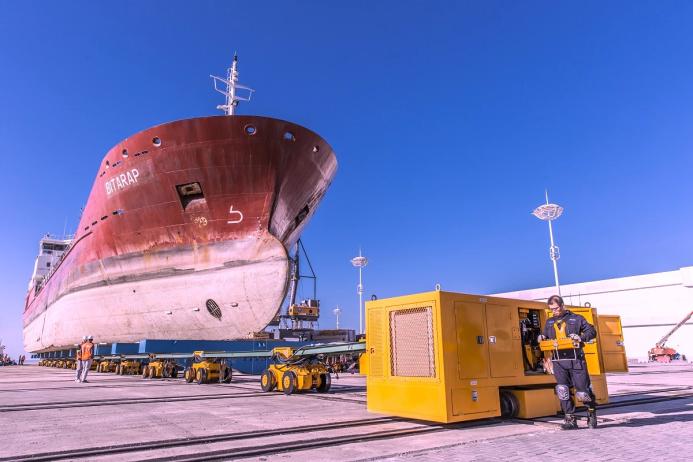
The Balkan shipyard is capable of building sea vessels for cargo transportation between Central Asia and the EU
The new Balkan shipyard, which began construction of ships for the first time in Turkmenistan, together with its partners, plans to put into operation the first bulk carrier within 14 months of production, the second - two months later, and the third - in another two months.
Such shipbuilding periods are the most optimal in the region since usually, the full commissioning of a sea vessel takes at least three years. This was stated by the Deputy General Director of the Agency of Transport and Communications under the Cabinet of Ministers of Turkmenistan Batyr Annaev at the session “Quick victories, big impact - short-term investment opportunities for the Trans-Caspian transport link” during the Global Gateway investor forum in Brussels.
Turkmenistan also plans to start building RO-RO ferries, despite the fact that the capacity of the national shipyard is designed to build 4 ships and repair 20 ships per year. According to preliminary calculations, to establish additional container transportation of 5 million tons per year between the ports of Turkmenbashi and Baku, the production of at least 20 more dry cargo ships will be required. And for Turkmen shipbuilding to reach its full capacity, investments will play a key role.
At the same time, at the parallel Global Gateway session “Crossing the Caspian Sea: turning a bottleneck into a key connection”, Seyitguly Baiseidov, Deputy Chairman of the Turkmen Maritime and River Transport Agency and Acting Director of the Turkmenbashi International Sea Port, spoke.
He emphasized that the Turkmenbashi International Seaport is located at the crossroads of Europe-Asia cargo routes and provides vital connectivity for landlocked Central Asian countries, offering them an economically viable route for trade.
Noting that the government of Turkmenistan invested US$1.5 billion in the construction of the new port, Bayseidov pointed to its capacity of 17 million tons of various types of cargo and commitment to the principles of sustainable development: in 2023, the port received a Green Port certificate from SLC ECO with the support OSCE.
Turkmenistan will also join the International Maritime Organization Convention on Facilitation of Maritime Transport, which will allow the creation of a “single window” system in the near future at the Turkmenbashi International Seaport.


